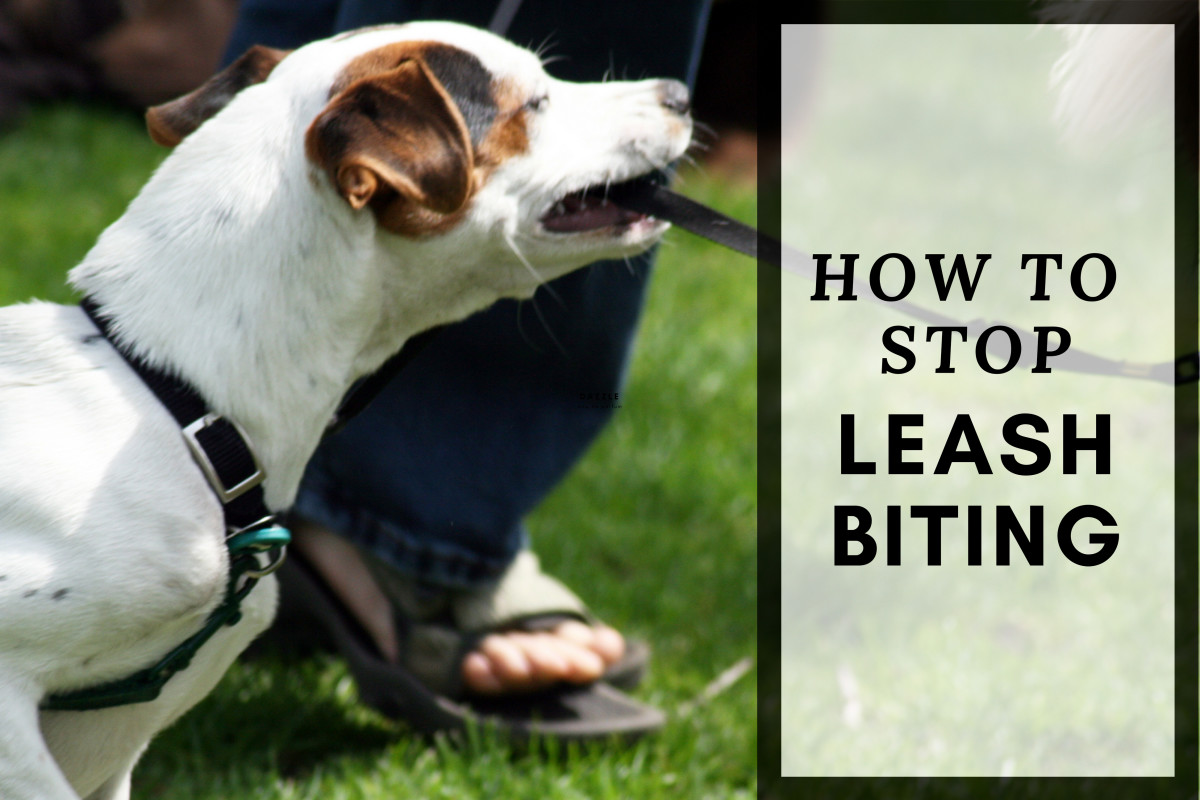The best way to stop a dog from biting the leash while walking is to use positive reinforcement. When a dog begins to bite the leash, immediately stop and redirect their attention by offering them a treat or toy. This will help teach your pup that it’s not okay to chew on the leash and that they are rewarded for good behavior instead.
Additionally, ensure you’re using an appropriate-sized collar and harness for your dog, as this could contribute to discomfort when walking, leading them to bite at their restraint. Lastly, take regular breaks during walks so your pup can stretch out and rest before continuing.

Fix Your Leash Walking Training For THESE Common Problems
- Determine the Reason: Before attempting to train your dog out of leash biting, it is essential to determine why they are doing it in the first place.
- It could be due to excitement or fear; you can only move forward with an effective solution by understanding this.
- Remove Reinforcement: If your dog bites at the leash because they find it rewarding, then you should stop reinforcing this behavior through your reactions, such as talking, making eye contact, or petting them while they do so.
- Instead, remain calm and unresponsive until they stop biting altogether.
- Positive Reinforcement: After removing reinforcement for the undesirable behavior, replace it with positive reinforcement for desirable behaviors, such as walking nicely on a loose lead without biting at the leash.
- Use treats or verbal praise whenever your pup walks properly on their lead without trying to bite at it and reward consistently throughout each walk session for best results.
- 4 Reward Alternatives: Replace biting with alternative activities that help keep your pup focused when walking, such as tracking scents or following commands like “sit” and “stay” during regular intervals along each route.
- This will help distract them from any urge that might arise, prompting them to bite their leash while walking, and can be very useful in helping break bad habits over time.
Why Does My Dog Bite the Leash When Walking
During walks, dogs often bite the leash due to excitement, anxiety, and frustration. The leash can act as an extension of their owner’s arm, causing them to become overly excited when they see something that sparks interest. In addition, if your dog feels anxious or frustrated while walking on a leash, it may express this emotion by biting the leash to release some tension.
Finally, it also could be because your pup finds it fun!
Dog Biting Leash And Jumping
Having a dog that bites its leash and jumps while on walks can be an incredibly frustrating experience. While it’s natural for a pup to want to explore the world around them, this behavior can cause owners undue stress and anxiety. To help combat this issue, it is essential to provide your dog with proper training and positive reinforcement when they remain calm on walks.
Additionally, providing plenty of exercise before walking your pup can go a long way in helping reduce unwanted behaviors like biting the leash or jumping up during walks.
Leash Biting Aggression
When dogs become excited or anxious while on walks, leash-biting aggression is expected. This aggressive behavior typically manifests as the dog lunging and snapping at the leash, sometimes even breaking it. Fortunately, the leash-biting charges can be managed with proper training, patience, and practice.
It’s important to remember that this behavior should not be punished as it may cause further anxiety in your pup. Instead, focus on providing positive reinforcement when your dog exhibits calm behaviors while out walking and reward them for good leashing manners whenever possible.
9 Week Old Puppy Biting Leash
During walks, your puppy may be tempted to bite the leash at nine weeks old. This is normal behavior for puppies and can usually be addressed with positive reinforcement training. The key is to praise your pup when they walk nicely on the leash and redirect its attention away from biting it.
You should also ensure that you have an appropriate-sized collar and leash for your puppy, so they don’t become frustrated or overstimulated while walking.
Dog Biting Leash And Growling
Dogs can become aggressive if they feel threatened, and one common sign of aggression is biting the leash or growling while on a walk. If your dog displays this type of behavior, it is essential to take steps to address the issue immediately. Start by ensuring you are not pulling too hard on their leash and provide positive reinforcement when they behave calmly.
Additionally, it may be beneficial to consult with a professional trainer who can help you understand why your dog is reacting aggressively and teach them how to remain calm in these situations.

Credit: pethelpful.com
How Do I Get My Dog To Stop Biting The Leash On Walks?
A common problem many dog owners face is their pup biting or tugging at the leash while on walks. This can be a frustrating issue to manage, but fortunately, there are steps you can take to prevent your pup from doing this. The first step is to ensure that your dog has plenty of training and exercise during the day, so they don’t become over-excited when it’s time for a walk.
You’ll also want to make sure you’re using an appropriate type of leash for your dog – if possible, opt for one with shorter handles, so it’s harder for them to grab onto in their mouth. Additionally, try carrying treats with you and rewarding your pet every time he/she behaves well on walks; this will help reinforce good behavior and stop them from biting the leash altogether.
What To Do If A Dog Attacks You While Walking?
If you find yourself being attacked by a dog while walking, the most important thing to remember is to remain calm and still. Do not run away or struggle; this will only escalate the situation. Instead, try to avoid direct eye contact with the animal and attempt to back out slowly.
If possible, put something between you and the animal, such as a bag or jacket, that can be used as protection. Try talking in a calm but firm voice while backing away so that it may deter the dog from attacking further. Use your arms or legs to protect yourself; do not strike out at the animal, as this could cause more harm than good.
Conclusion
This blog post has provided a few tips on handling your dog biting the leash while walking. The most important thing is to be patient and consistent in your training, which will help establish good habits for you and your dog. With patience and consistency, along with understanding why it may be happening in the first place, you can work together to ensure that leash biting becomes a thing of the past.












GIPHY App Key not set. Please check settings